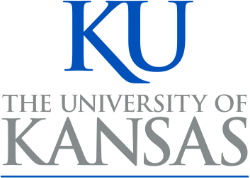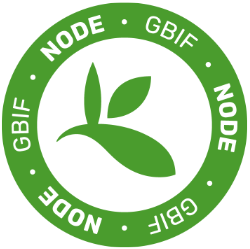by Molly Phillips, Deborah Paul, Matthew Collins
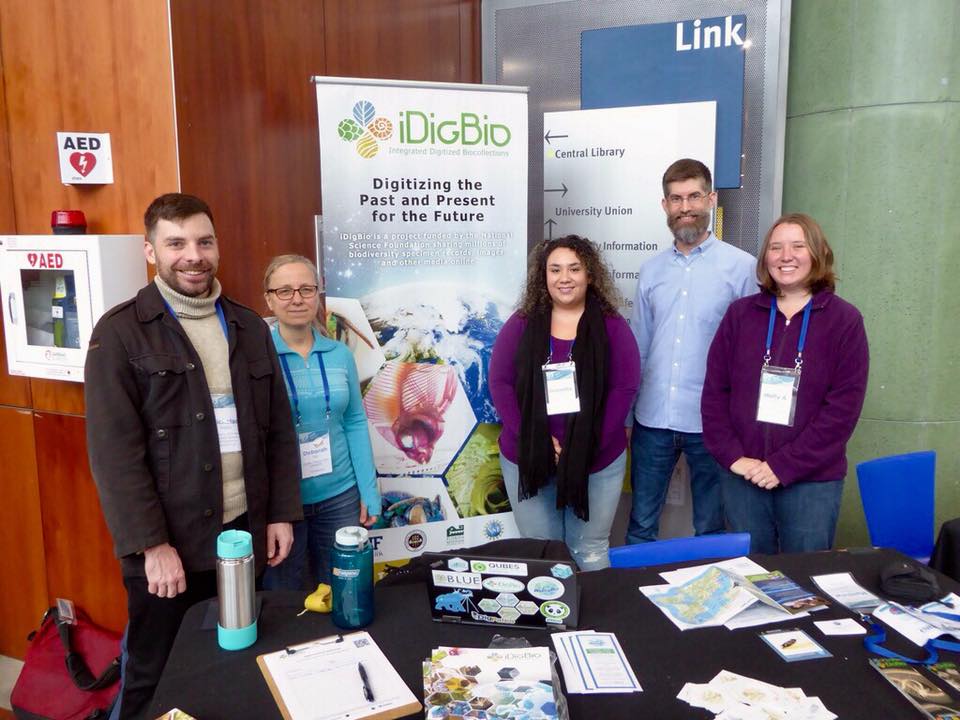
Pictured left to right: Nicholas Rejack, Deborah Paul, Jeannette Pirlo, Matthew Collins, and Molly Phillips. Not pictured: Randal Singer, Sean Moran, Kevin Love, Pam Soltis, and José Fortes
iDigBio was involved in several activities during the first ever joint meeting of the Society for the Preservation of Natural History Collections (SPNHC) and Biodiversity Information Standards Group (TDWG) relating to collections data. Staff gave presentations and co-organized symposia, discussion sessions, and interest groups on topics across the domains of iDigBio.
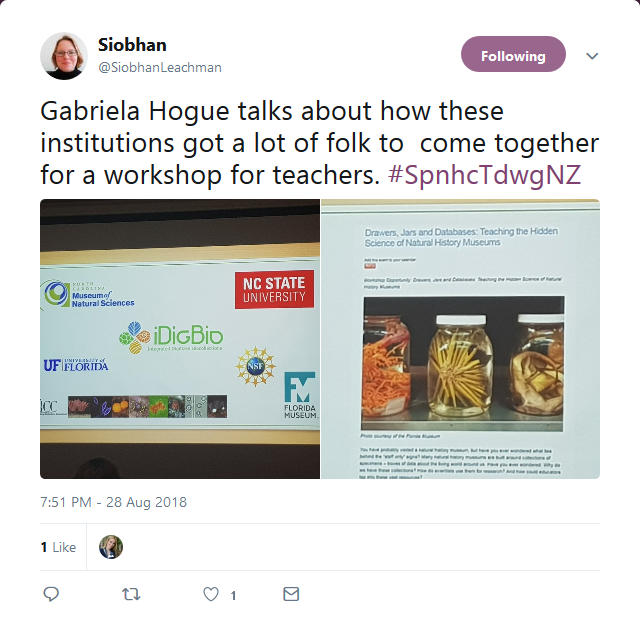 Several activities focused on collections data use in education and outreach. First, Molly Phillips (iDigBio, BLUE), Gabriela Hogue (North Carolina Museum of Natural Sciences), Anna Monfils (BLUE, Small Collections Network), and Gil Nelson (iDigBio, Small Collections Network), co-organized a full-day symposium with Biodiversity Literacy in Undergraduate Education (BLUE), and the Small Collections Network (SCNet) entitled “Completing the Data Pipeline: Collections Data Use in Research, Education and Outreach”. The symposium included 15 speakers that focused on how different audiences (researchers, educators, students, community scientists) can both utilize collections data, and inform and contribute to the collections data pipeline. You can find links to the presentations and recordings on the symposium’s wiki page.
Several activities focused on collections data use in education and outreach. First, Molly Phillips (iDigBio, BLUE), Gabriela Hogue (North Carolina Museum of Natural Sciences), Anna Monfils (BLUE, Small Collections Network), and Gil Nelson (iDigBio, Small Collections Network), co-organized a full-day symposium with Biodiversity Literacy in Undergraduate Education (BLUE), and the Small Collections Network (SCNet) entitled “Completing the Data Pipeline: Collections Data Use in Research, Education and Outreach”. The symposium included 15 speakers that focused on how different audiences (researchers, educators, students, community scientists) can both utilize collections data, and inform and contribute to the collections data pipeline. You can find links to the presentations and recordings on the symposium’s wiki page.
On the following day, several iDigBio staff members participated in a discussion session organized by BLUE on defining skills and competencies needed for future biodiversity data scientists. Directly after this discussion session, iDigBio co-organized a brand new session type with the help of folks from BLUE and Ecological Society of America (ESA) – the Educational Materials Share Fair. The share fair had seven presenters sharing their educational materials ranging from lesson plans, to educational kits, to mobile friendly apps with our goals to raise awareness of the resources, and get feedback and support from the community. Participants of the session broke into small groups and gave the presenters their reactions on the materials. The session concluded with a presentation from the Education Director of ESA, Teresa Mourad, on how to publish educational resources with TIEE and LifeDiscoveryEd. Find more information about this session on the wiki, and stay tuned for news of an educational materials share fair at SPNHC 2019!
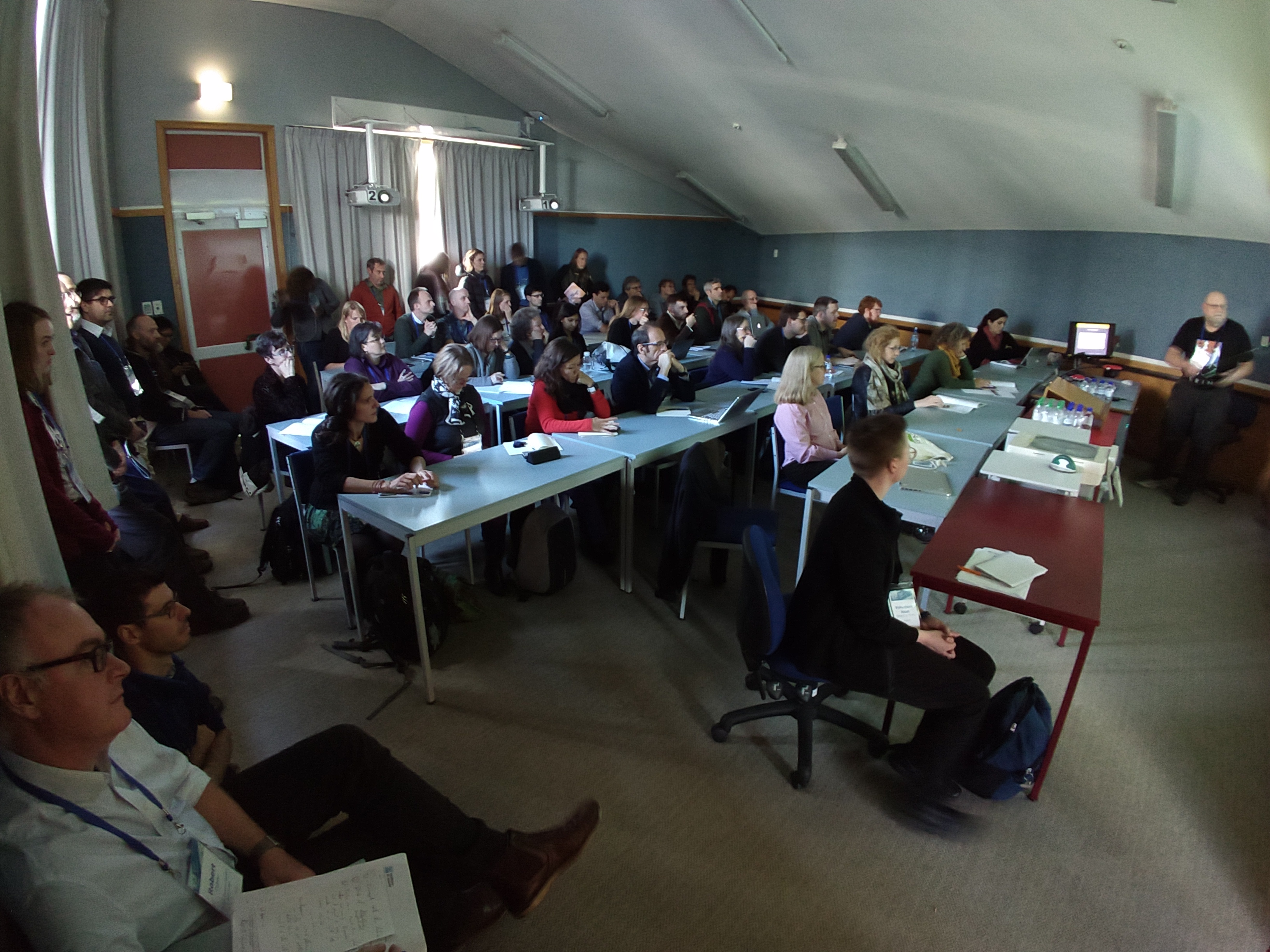 Nicole Fisher (ANIC, CSIRO) collaborated with Deborah Paul (iDigBio) to delve into better understanding of the data integration and data quality hurdles faced by those providing data to aggregators or by those using crowdsourcing to transform data. In this multi-part event, organizers queried the community worldwide via a survey (thanks Shari Ellis at iDigBio), designed a half-day symposium, and a follow-up (well-attended!) SPNHC special interest group meeting open-discussion session. Look for more about what we learned in an upcoming publication. For now, you can see the presentations on the symposium wiki and read the symposium abstracts in the BIS (TDWG) BISS Journal.
Nicole Fisher (ANIC, CSIRO) collaborated with Deborah Paul (iDigBio) to delve into better understanding of the data integration and data quality hurdles faced by those providing data to aggregators or by those using crowdsourcing to transform data. In this multi-part event, organizers queried the community worldwide via a survey (thanks Shari Ellis at iDigBio), designed a half-day symposium, and a follow-up (well-attended!) SPNHC special interest group meeting open-discussion session. Look for more about what we learned in an upcoming publication. For now, you can see the presentations on the symposium wiki and read the symposium abstracts in the BIS (TDWG) BISS Journal.
iDigBio members also participated in various other activities such as the SPNHC International Relations Committee, SPNHC Council Meeting, TDWG Data Quality Interest Group, and joint TDWG/RDA Attribution Metadata Working group. For example, we are helping to get the TDWG Biodiversity Informatics Curriculum Interest Group restarted with Robert Montoya (University of Indiana) offering to be lead convenor. The TDWG Collection Descriptions Interest Group made progress with further development of an updated Task Group charter. And, the TDWG Data Quality group has finalized the initial batch of tests and has begun organizing development of a suite of code to be shared across aggregators, collections systems, and other interested parties so everyone can be consistent in how we talk about the fitness for use of biodiversity data.
Selected references.
Collins M, Tarvin R, Kandziora M, Dahdul W, Paul D (2018) Phenomap - Challenges and Successes in Bringing Together Multiple Data Projects to Build New Visualizations of Phenotypic Information and Specimen Records. Biodiversity Information Science and Standards 2: e25698. https://doi.org/10.3897/biss.2.25698
Collins M, Yeole G, Frandsen P, Dikow R, Orli S, Figueiredo R (2018) A Pipeline for Deep Learning with Specimen Images in iDigBio - Applying and Generalizing an Examination of Mercury Use in Preparing Herbarium Specimens. Biodiversity Information Science and Standards 2: e25699. https://doi.org/10.3897/biss.2.25699
Monfils A, Ellwood E, Linton D, Phillips M, White L, Douglas N (2018) Preparing the Next Generation of Data-Driven Scientists through the Biodiversity Literacy in Undergraduate Education – Data Initiative (BLUE Data). Biodiversity Information Science and Standards 2: e27162. https://doi.org/10.3897/biss.2.27162
Nelson G, Phillips M, Monfils A, MacFadden B, Hogue G (2018) Completing the Data Pipeline: Collections Data Use in Research, Education and Outreach. Biodiversity Information Science and Standards 2: e26522. https://doi.org/10.3897/biss.2.26522
Paul D, Fisher N (2018) Challenges For Implementing Collections Data Quality Feedback: synthesizing the community experience. Biodiversity Information Science and Standards 2: e26003. https://doi.org/10.3897/biss.2.26003
Phillips M, Basham A, Cubeta M, Harris K, Hendricks J, Hogue G, Karim T, White L (2018) Engaging K-12 Audiences with Biodiversity Data through Advancing Digitization for Biodiversity Collections. Biodiversity Information Science and Standards 2: e26473. https://doi.org/10.3897/biss.2.26473
Find more digitization related presentations click here.





